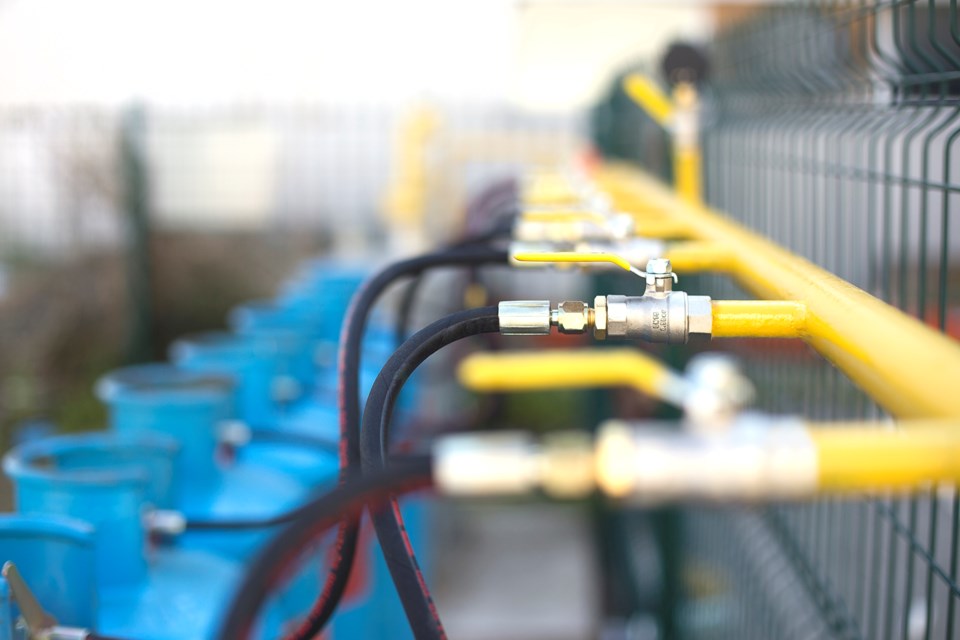WESTERN PRODUCER — Natural gas prices look like they might be moderate this winter, a trend that should help keep nitrogen fertilizer prices more reasonable than they were last winter.
Also, crude oil prices last week fell to the lowest levels since the summer on the expectation that demand will be soft in the coming months. More on that later.
Natural gas on the New York Mercantile Exchange (NYMEX) in the second half of October showed a modest rally from the summer low near US$2 per million BTU as the winter heating season approached.
The December contract had rallied close to $3.70, but that momentum disappeared last week, as the price fell to about $3.
The drop was attributed to forecasts for a warm November for much of the United States, European gas storage reaching 100 per cent capacity and a record warm fall in Japan, allowing it to fill its storage infrastructure.
Prices fell even as there are fears that the Israel-Hamas war in Gaza could spread into a regional conflict involving major energy exporters.
The current price is a far cry from last November when it was above $7 per million BTU, which itself was a break from the peak of about $10 in August 2022.
Prices had soared following Russia’s invasion of Ukraine. Frictions associated with the war caused European countries to drastically reduce the amount of Russian gas moving by pipeline to Europe.
This created huge demand for liquified natural gas (LNG) from the Persian Gulf and the U.S., delivered in tankers to European ports, as well as strong energy conservation by consumers and industry. An unusually mild winter last year in Europe also helped it avoid crippling natural gas shortages.
This fall, the new energy trade orientation is established. Europe built more infrastructure to receive LNG and filled its gas storage. It also lined up regular LNG imports under long-term supply contracts.
Natural gas supply in U.S. underground storage is also larger than it was last year.
The U.S. Energy Information Administration on Nov. 6 said there is an improved likelihood that global natural gas supply will meet demand this winter. But it added that a surprise cold snap or supply disruption could cause prices to rise. The ongoing Israel-Hamas conflict certainly increases the potential for supply disruption.
The falling natural gas price this year helped nitrogen fertilizer makers lower their costs of production. Also, the high fertilizer price last year caused global farmers to trim demand.
A retail fertilizer price tracker maintained by Progressive Farmer-DTN shows the average urea price in the U.S. bottomed in late summer at US$563 per ton, down from more than $800 last fall. Anhydrous bottomed at $634 in August, down from more than $1,400 last fall.
But even at lower levels, prices are higher than before COVID-19. In 2019 and 2020 urea ranged between about $350 and $450 a ton.
Fertilizer maker CF Industries Holding, in its third quarter report Nov. 1, said recent lower fertilizer prices have caused demand to bounce back and the financial outlook for producers in lower-cost natural gas regions such as North America is for good profit margins.
“Management believes that the North American inventory position at the end of the third quarter for all nitrogen products remained below average due to lower import levels and higher export volumes year-to-date.”
It added that demand from Brazil is strong because corn acres should rise and as fertilizer distributors rebuild inventories.
The report also said that in Europe in the third quarter, even with more moderate natural gas prices, about 25 per cent of ammonia and 20 per cent of urea manufacturing capacity was in shutdown or curtailed.
The first week of November also saw falling crude oil prices with values close to US$75 per barrel for West Texas Intermediate on the expectation that demand might be weaker than expected.
Central banks, including the U.S. Federal Reserve, say they are not done fighting inflation. Another interest rate hike is possible as banks try to rein in inflation to a two per cent target. But a hike would slow economic activity and weaken oil demand.
Also, economic statistics from China show the Asian giant is struggling to get back on track.
The worry about demand has overshadowed production cuts that Saudi Arabia and Russia, the top oil producers in OPEC+, have had in place since summer. They say they will continue them to the end of the year.
But those cuts are partly offset by other world producers maximizing output.
Many price forecasts for early 2024 show West Texas Intermediate back close to $90 a barrel, but the big uncertainty is demand.
OPEC+ thinks China will roar back, helping to lift global demand by 2.25 million barrels a day on average to 104.31 million, while the International Energy Administration forecasts an increase of only 900,000 barrels a day because of demand destruction caused by inflation around the world and rising electric vehicle sales.
SASKTODAY.ca is Saskatchewan's home page. Bookmark us at this link.




